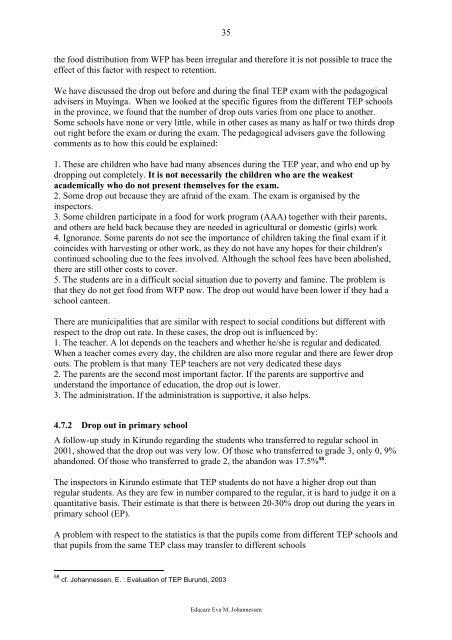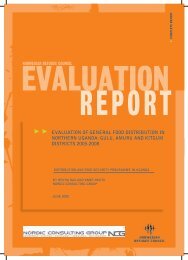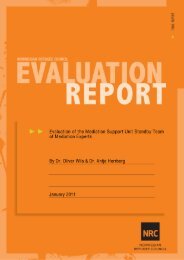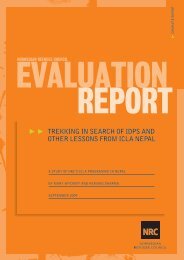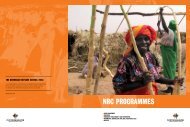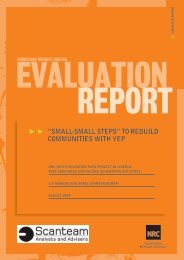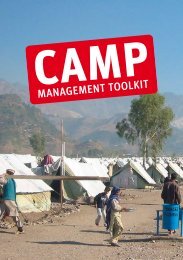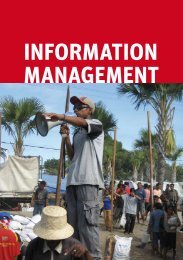ONE STEP CLOSER - BUT HOW FAR? - Norwegian Refugee Council
ONE STEP CLOSER - BUT HOW FAR? - Norwegian Refugee Council
ONE STEP CLOSER - BUT HOW FAR? - Norwegian Refugee Council
- No tags were found...
You also want an ePaper? Increase the reach of your titles
YUMPU automatically turns print PDFs into web optimized ePapers that Google loves.
35the food distribution from WFP has been irregular and therefore it is not possible to trace theeffect of this factor with respect to retention.We have discussed the drop out before and during the final TEP exam with the pedagogicaladvisers in Muyinga. When we looked at the specific figures from the different TEP schoolsin the province, we found that the number of drop outs varies from one place to another.Some schools have none or very little, while in other cases as many as half or two thirds dropout right before the exam or during the exam. The pedagogical advisers gave the followingcomments as to how this could be explained:1. These are children who have had many absences during the TEP year, and who end up bydropping out completely. It is not necessarily the children who are the weakestacademically who do not present themselves for the exam.2. Some drop out because they are afraid of the exam. The exam is organised by theinspectors.3. Some children participate in a food for work program (AAA) together with their parents,and others are held back because they are needed in agricultural or domestic (girls) work4. Ignorance. Some parents do not see the importance of children taking the final exam if itcoincides with harvesting or other work, as they do not have any hopes for their children'scontinued schooling due to the fees involved. Although the school fees have been abolished,there are still other costs to cover.5. The students are in a difficult social situation due to poverty and famine. The problem isthat they do not get food from WFP now. The drop out would have been lower if they had aschool canteen.There are municipalities that are similar with respect to social conditions but different withrespect to the drop out rate. In these cases, the drop out is influenced by:1. The teacher. A lot depends on the teachers and whether he/she is regular and dedicated.When a teacher comes every day, the children are also more regular and there are fewer dropouts. The problem is that many TEP teachers are not very dedicated these days2. The parents are the second most important factor. If the parents are supportive andunderstand the importance of education, the drop out is lower.3. The administration. If the administration is supportive, it also helps.4.7.2 Drop out in primary schoolA follow-up study in Kirundo regarding the students who transferred to regular school in2001, showed that the drop out was very low. Of those who transferred to grade 3, only 0, 9%abandoned. Of those who transferred to grade 2, the abandon was 17.5% 58 .The inspectors in Kirundo estimate that TEP students do not have a higher drop out thanregular students. As they are few in number compared to the regular, it is hard to judge it on aquantitative basis. Their estimate is that there is between 20-30% drop out during the years inprimary school (EP).A problem with respect to the statistics is that the pupils come from different TEP schools andthat pupils from the same TEP class may transfer to different schools58 cf. Johannessen, E. : Evaluation of TEP Burundi, 2003Educare Eva M. Johannessen


